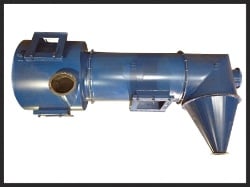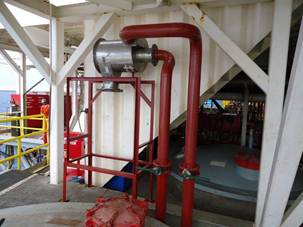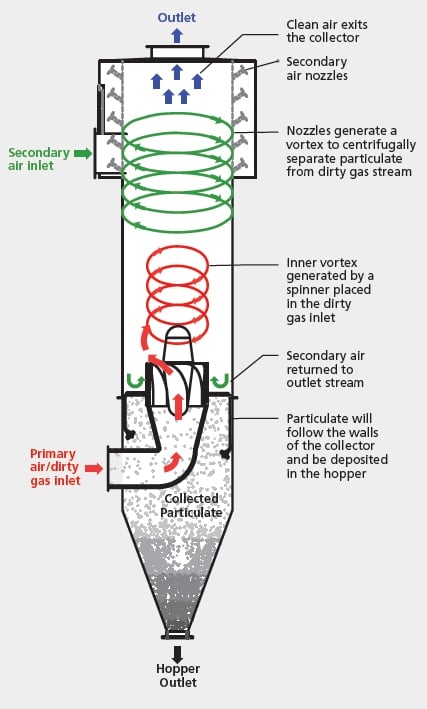For the past several decades, industrial facilities in a wide variety of industries have deployed dust collection systems as part of its manufacturing process. As technology and filtration techniques have improved, these systems have changed and evolved to become more sophisticated, and at times complex.
Dust collectors are used in many industries to improve air quality and remove harmful particles from the air. There are several types of dust collectors that are commonly used in industrial and commercial settings. Here are some of the most common types:
Baghouses
A baghouse consists of a vessel with many filters (bags) inside. The bags are located in rows and mounted on a tube sheet. The tube sheet separates the dirty air from the clean air. Dirty air enters the bag house near the bottom. The dirty air is forced through porous bags which have a built-up filter cake. Clean air goes through the filter/bag and leaves through the top of the vessel, while the dust falls down to be discharged through the hopper.
Cartridge Collectors
Cartridge collectors operate similar to baghouses except they use pleated cartridges to provide much higher surface areas in smaller filter volume than bag filters. This means they are much smaller than baghouse for the same air volume. However, the cartridges have lower temperature limits and can plug easily. They are used in the following applications: grinding, sandblasting, welding fumes, laser and plasma cutting fumes, graphite, pharmaceutical powders, acid fine chemical powders, and more. When dusts are difficult to handle, hygroscopic, or high temperature, a baghouse is a better alternative for trouble free dust collection and longer filter life.
Cyclone
The cyclone is the simplest design of all dust collectors. It is a mechanical way to remove dust from an air stream. The cyclone uses centrifugal and gravitational forces to force the dust to the vessel walls and then let gravity collect it. The cyclone requires only a discharge valve and fan for operation. Cyclones require very little maintenance. Cyclones are often used as prefilters for other dust collectors. They can provide high removal efficiencies of larger dust particles, thereby decreasing the loading on the main dust collector, this can increase total removal efficiency, decrease system maintenance and extend equipment life, not to mention collect material before contamination.
ESP (Electro Static Precipitator)
ESPs use high voltage to electrically charge particulate in the air. The charged particulate is collected on charged plates as the air stream passes. ESPs use large amounts of electricity and can get collection efficiencies as high as 99% for many applications. ESPs provide good removal of sub-micron particulate. ESP are expensive and require high operating and maintenance costs.
Wet Scrubbers
Wet Scrubbers are available in a variety of designs including cyclones, venturi, packed towers, cloud chambers and fluidized beds. Wet scrubbers spray water into the dirty airstream allowing dust and water droplets to contact, thereby making them easier to collect. Wet scrubbers have high removal efficiency but can be expensive to operate and treat the slurry leaving. The wet cyclone is just like a regular cyclone except that they spray water in the cyclone.
To improve efficiency and safety, there is no substitute for an on-site inspection by an experienced expert. Click below to start with a free 20-minute phone consultation by clicking the button.

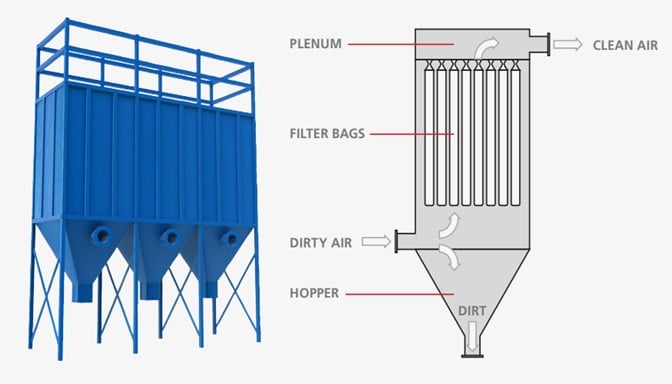

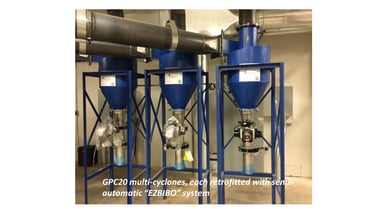 The “EZBIBO” system was originally designed for use with Aerodyne GPC Cyclones to allow for easier bag-in bag-out capture systems for low toxic level pharmaceutical dusts typically encountered with encapsulators, pill coating systems, and some mixing operations. The system allows for capture and bagging of waste material in the pharmaceutical process allowing for weighing and accounting of all materials used in a process, with minimal exposure to operation personnel.
The “EZBIBO” system was originally designed for use with Aerodyne GPC Cyclones to allow for easier bag-in bag-out capture systems for low toxic level pharmaceutical dusts typically encountered with encapsulators, pill coating systems, and some mixing operations. The system allows for capture and bagging of waste material in the pharmaceutical process allowing for weighing and accounting of all materials used in a process, with minimal exposure to operation personnel.


